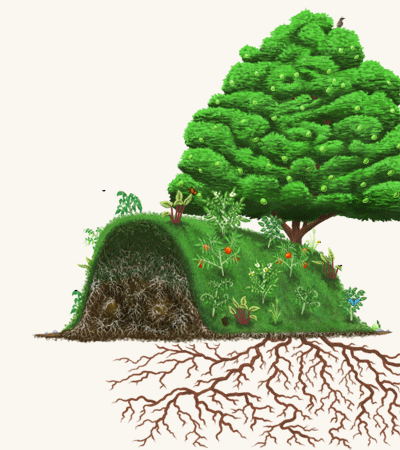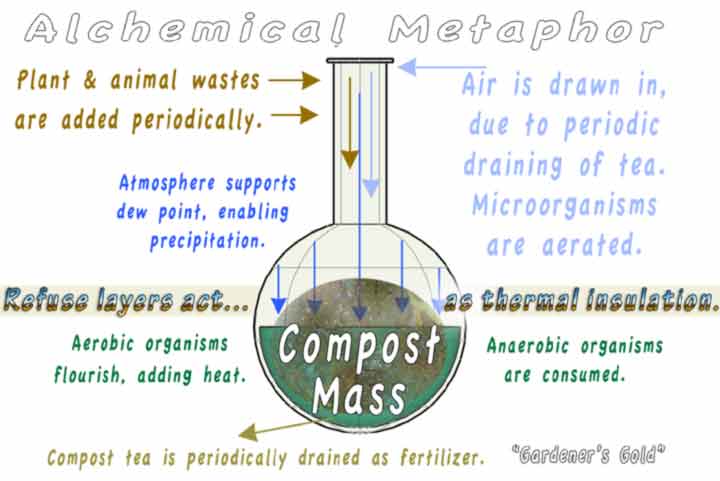 Posted by Erichj
(here)
Posted by Erichj
(here)
Prease review my opening presentation at the fourth USBI Biochar Conference in Sonoma California;
Carbon Conservation for Home, Health, Energy & Climate
http://2012.biochar.us.com/299/2012-...-presentations
Complementary to my focus on animal feed supplements as practiced by the European and Japanese companies, here is this latest in vivo study by Dr.Leng in Australia. This Black Revolution for agriculture could be fermented by our livestock. In the EU, 90% of the Biochar produced is passed through livestock before composting and field application. On Swiss Farms they have eliminated manure odor and closed the nutrient loop by retaining N in the Char/Compost. Dr. Ron Leng have shown cattle fed char reduced enteric methane emissions (40%), enhancing feed conversion (25%!), this has to be one the greatest advances in bovine nutrition in the last few decades.
http://www.lrrd.org/public-lrrd/proo.../leng24199.htm
A New discovery from the Advanced Light Source at Berkeley about fungal potassium salts being the primary nucleating catalyst for clouds & rain. That vision of how life itself calls the rain is another unaccounted for ecological service provided by a healthy soil. Several other findings concerning soil microbiology and Soil Carbon are extremely supportive to Carbon Farming initiatives & Soil Carbon Standards
[1].
Also;
In situ Toxic remediation
The DuPont/Oak Ridge lab remediation on Hg with Dr. Richard Landis and Dr. Palumbo, head of Bio-Science at Oak Ridge are showing a Hg reduction of 60% traveling up the food chain.
The Iwamoto company (SuperStoneClean Biochar) has been doing soil remediation in Fukushima Japan, concentrating the cesium to magnetic ash. Additionally, the video below, shows their work in remediation of salt damage from the tsunami itself.
Fields Flourish Again;
http://www.jibtv.com/video/video6.html?n=0
At the recent ACS – Soil Science Conference over 100 Biochar presentations, Peer review studies are doubling every year,
Please review my
Sonoma Biochar conference report for further developments, Home pyrolytic woodstoves, grassroots organizations spreading Biochar soil technology across the global South ;
http://tech.groups.yahoo.com/group/b...y/message/3921
CoolPlanet Biofuels in particular seems, by all accounts, to have a game changing technology, carbon negative bio-gasoline.
The CEOs have already taken the lead sponsorship for the University of Massachusetts 2013, fourth, USBI Biochar Conference, October 13-16, 2013, Please consider attending, the whole conference wil be the first conference in history to be carbon negative as carbon credits from CoolPlanet Biofuels and WorldStove cover all carbon footprints. Local Biochar farmers are even catering with their "Cool Food" branded nutrient dense Biochar produce.
http://symposium2013.newsite.pvbiochar.org
Please take a look at this video by the CEO of CoolPlanet Biofuels, guided by Google's Ethos and funding, along with GE, BP and Conoco, they are now building the farm scale reactors that convert 1 ton of biomass to 75 gallons of bio–gasoline and 1/3 ton Biochar for soil carbon sequestration. The price of production, from field to tank is $1.25/gallon.
If it's good enough for Google… It's good enough for me;
https://youtube.com/watch?v=zkYVlZ9v_0o
A Carbon Farming Initiative, like the Aussies have, and Canada is contemplating, feeds in to a carbon labeling for all products, as WalMart is developing. A carbon label puts externalized cost right there for the public to understand, parsing out all that has gotten the product to their hands.
The Accounting of soil carbon as the base measurement of sustainability and aligning incentives to get a farmer paid for his good works, is where carbon markets should all grow from. The farmer will always have the lowest cost system for sequestration of carbon and it is about time that the carbon markets recognize that as it's very foundations.
A foundation far more secure than any other market. All political persuasions agree, Building soil carbon is good.
Cheers,
Erich
Erich J. Knight
Shenandoah Gardens
1047 Dave Berry Rd. McGaheysville, VA. 22840
540-289-9750
Policy & Community Committee Chair,
2013 North American Biochar Symposium
http://pvbiochar.org/2013-symposium/
[1]
Demonstration, Using quantitative 13C nuclear magnetic resonance (NMR) spectroscopy measurements, concluding that both Terra Preta Soils and Midwest dark soils contain 40% to 50%+ of their organic carbon (SOC) as pyrolytic carbon char, that this pyrolytic carbon can account for all CEC
Abundant and Stable Char Residues in Soils: Implications for Soil Fertility and Carbon Sequestration
J.-D. Mao, R. L. Johnson, J. Lehmann, D. C. Olk, E. G. Neves, M. L. Thompson and K. Schmidt-Rohr
Environ. Sci. Technol., Article ASAP
DOI: 10.1021/es301107c
Publication Date (Web): August 20, 2012
Copyright © 2012, American Chemical Society
http://pubs.acs.org/doi/abs/10.1021/es301107c
(Potassium)
Salt Seeds Clouds in the Amazon Rainforest; http://newscenter.lbl.gov/feature-st...azon-aerosols/
Fertile soil doesn't fall from the sky. The contribution of bacterial remnants to soil fertility has been underestimated until now
http://www.alphagalileo.org/ViewItem...CultureCode=en
Biologists Unlock 'Black Box' to Underground World: How Tiny Microbes Make Life Easier for Humans,
http://www.sciencedaily.com/releases...mber_201276911.
Cross-biome metagenomic analyses of soil microbial communities and their functional attributes,
http://www.pnas.org/content/109/52/21390
Re-Building the World's Soil: The Role of Soil Carbon Methodology for U.S. and Global Carbon Offset Projects,
http://www.prweb.com/releases/2012/12/prweb10185341.htm









 Reply With Quote
Reply With Quote










Bookmarks